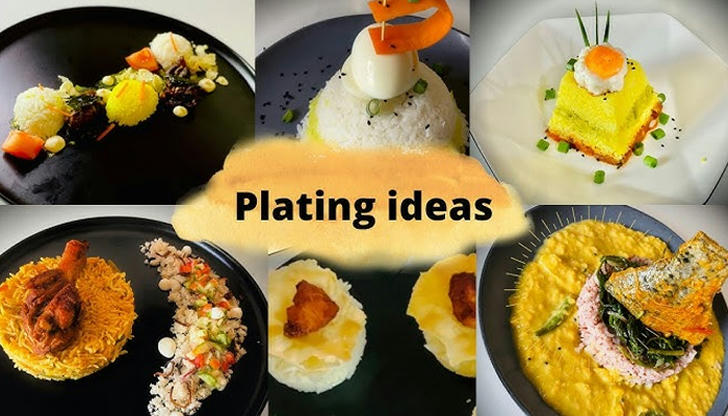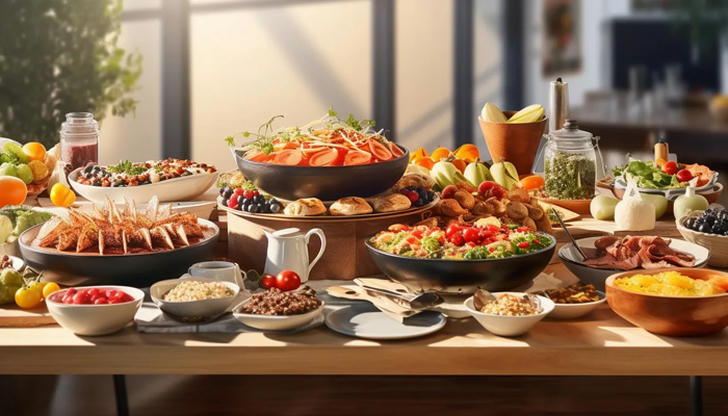The Joy of Sharing: Creative Food Plating Ideas for Your Next Social Gathering

Food plating is an essential aspect of the dining experience that goes beyond taste alone. While flavors and aromas are critical to any meal, the visual appeal of food can elevate the entire experience. The way food is presented on the plate not only affects our perception of taste but also enhances the sense of occasion during social gatherings. Creative food plating encourages interaction and sharing, transforming an ordinary meal into an enjoyable, communal event.
1. Why Plating Matters
A. First Impressions
We often eat with our eyes first. A well-plated dish can immediately capture the attention of your guests and set the tone for the meal ahead. The visual appeal of food can make it more appetizing and memorable. Studies have shown that people are more likely to enjoy food when it is aesthetically pleasing, as the brain associates attractive food with better flavor.
B. Enhances Dining Experience
When food is presented beautifully, it can make an everyday meal feel more special. Whether it's an elegant dinner or a casual gathering, creative plating can turn a simple dish into a work of art. The careful arrangement of ingredients adds to the overall ambiance, elevating the experience for both the cook and the guests.
C. Encourages Sharing
Plating can also serve a social function by encouraging interaction. For example, serving food in an inviting way—whether on a shared platter or in individual portions—makes it easier for people to engage and enjoy the meal together. A well-plated dish can stimulate conversation and foster a more connected dining atmosphere.
2. Key Principles of Creative Plating
A. Use of Color
Color plays a vital role in food presentation. Vibrant, contrasting colors can make a dish look more appealing. For instance, green herbs and vegetables can provide a fresh, eye-catching contrast against the more neutral tones of meat or grains. The key is balance—using colors that complement each other rather than overwhelm the plate.
B. Textures and Layers

The visual appeal of a dish can be enhanced by layering or stacking ingredients. Height and depth can be used to create an interesting plate, and combining different textures adds dimension. For example, pairing a creamy mashed potato with a crispy garnish can provide both visual and tactile contrast.
C. Symmetry vs. Asymmetry
Plating can follow either a symmetrical or asymmetrical approach, depending on the desired style. Symmetrical plating gives a sense of balance and harmony, often suited for formal or traditional settings. Asymmetrical plating, on the other hand, is more modern and informal, offering a playful, dynamic look that invites curiosity.
3. Plating for Shared Meals
A. Family-Style Plating
For gatherings that involve shared meals, family-style plating is a popular choice. Large platters allow guests to help themselves and pass dishes around the table. When arranging food for family-style service, focus on creating an appealing spread with colors, textures, and variety. It’s also important to think about practicality, ensuring that the dishes are easy to reach and serve.
B. Buffet-Style Presentations
Buffet-style gatherings require thoughtful plating to keep the spread visually appealing and organized. Food should be arranged in a way that is easy for guests to navigate while still looking appetizing. Using trays or elevated stands can create visual interest and make the table look inviting. Labeling each dish is also a helpful touch, allowing guests to know what they are choosing.
C. Interactive Plating
For some events, allowing guests to assemble their own plates can be a fun and interactive way to share food. This is especially popular in dishes like tacos, salads, or pasta stations, where ingredients are laid out for guests to mix and match according to their preferences. The focus here is on ease of access and an inviting setup.
4. Plating Ideas for Specific Meals
A. Appetizers and Finger Foods
Small bites and appetizers can be plated in individual portions or grouped together on a single platter. Serving food in a way that makes it easy to pick up and eat with hands encourages sharing. For instance, placing dips in individual bowls or arranging skewered items in a decorative way can make them more appealing.
B. Main Courses
Main courses, such as meats, seafood, or vegetarian dishes, should be plated with a balance of protein and sides. Use negative space on the plate to avoid overcrowding, and think about the balance between the different components. A drizzle of sauce or a sprinkle of fresh herbs can enhance the dish visually while complementing the flavors.
C. Desserts

Plating desserts can be a creative and enjoyable aspect of the meal. Desserts often benefit from intricate plating, where garnishes like fruit, chocolate shavings, or edible flowers are used. For example, plating a small portion of mousse with a drizzle of caramel sauce and a few berries can turn a simple dessert into a visually stunning dish.
5. Budget-Friendly Plating Tips
Food plating doesn’t require expensive ingredients or tools. Simple garnishes, such as fresh herbs or a sprinkle of spice, can make a dish look elegant without added cost. Choosing affordable yet attractive dinnerware also plays a significant role in the presentation. You don’t need high-end plates or utensils to create a beautiful meal—it's more about how the food is arranged on the plate.
6. Plating Tools & Accessories
While advanced tools like plating rings and tweezers can be useful, they are not necessary for beautiful plating. Basic kitchen tools, such as squeeze bottles for sauces or spoons for drizzling, can help add finesse to the plate. Using everyday items creatively allows home cooks to experiment with plating techniques without requiring specialized equipment.
7. Inspiring Plating Themes for Your Next Gathering
Creative plating can be aligned with the theme of the meal or event. For example, a rustic Italian dinner might feature large, informal platters of pasta and grilled vegetables, while a holiday gathering could include a more refined presentation with seasonal garnishes. A well-plated dish can reflect the cultural or seasonal context, enhancing the experience and setting the tone for the meal.
Conclusion
Food plating is a simple yet powerful way to enhance a meal and make a social gathering more memorable. It encourages interaction, adds visual appeal, and elevates the dining experience. By following a few basic plating principles and considering the type of meal and gathering, anyone can create beautiful, shareable plates that will impress guests and enhance the enjoyment of the meal.
